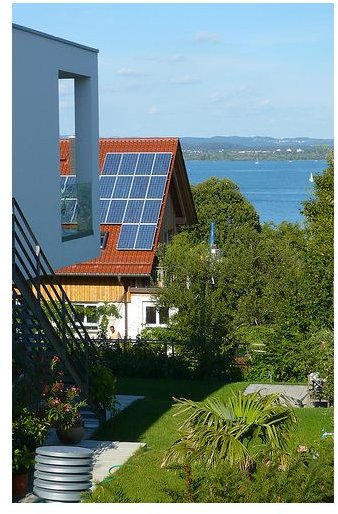The History of Green Building & Construction: The Beginning of Green Homes
The Origins of Green Building
Individuals and companies have only been building green homes for the past thirty years; still, within that time, the green movement has been constantly growing. The history of green building dates back much further than the 1970’s. It was in the midst of the industrial revolution that Henri Becquerel first witnessed the transformation of solar energy into electrical energy, known as photovoltaic power. Around this time, the late 1800’s to early 1900’s, a number of solar power plants were built to utilize the sun’s energy for steam power. Then, in the 1950’s, solar energy was used on an extremely small-scale, making way for the solar panel solution twenty years later.
During the energy crisis of the 1970’s, green building moved from research and development to reality. Builders and designers were looking for a way to reduce the reliance of buildings and homes on fossil fuels. Solar panels were used to make more environmentally friendly homes, although only in small numbers due to high initial costs.
Since then, developers have been able to construct more efficient and less expensive solar panels, making solar energy more of a reality. Also, during this transition period, designers and consumers started wondering, if solar panels can make buildings more efficient, lower energy bills, and reduce the negative impact on the environment, what other steps can be taken to build even greener homes? Now, Eco construction involves so much more than simply using solar panels.
Considerations
Aside from harnessing the earth’s richest energy source — sunlight — green builders and designers examine a number of issues to make a building Eco-friendly. Building materials are a huge concern. Even today, the building industry in the United States uses up forty percent of all raw materials. Any reduction through the use of sustainable, recycled materials will have a huge impact on resource preservation.
Durability is another issue; if environmentally-friendly materials need to be replaced frequently, then they become less and less efficient.
Good location is a central component of Eco construction. Homes should be close to the community or public transportation to reduce the need for driving and they should be in a place that will not harm the environment around them. Green homes should also be designed to encourage recycling, manage water use, and minimize energy use.
What’s the Future?
Today, green design is still a relatively new concept and the history of green building only goes back a few decades. This however is changing the movement will inevitably grow. Not just because consumers want to have more environmentally-friendly, safer, cleaner homes for their families, but because society will be dependent on the efficiency and long-term expense reduction of building green homes. Those who have experience with green building and design, either through their own home or business or through working in the industry, have set an example of benefits of the eco transformation, saving money, energy and reducing waste.
Sources:
Wilson, Alex. “Your Green Home: A Guide to Planning a Healthy, Environmentally Friendly New Home.” (New Society Publishers, 2006).
Solar Energy Industries Association
photo credit: Jasmine Jennyjen
This post is part of the series: Building a Green Home
Building a green home is an environmentally responsible, cost-efficient, and healthy choice for you and your family. However, there are a number of issues to address, from choosing a green home location, picking out a green architect, evaluating energy-efficiency issues and building materials.
